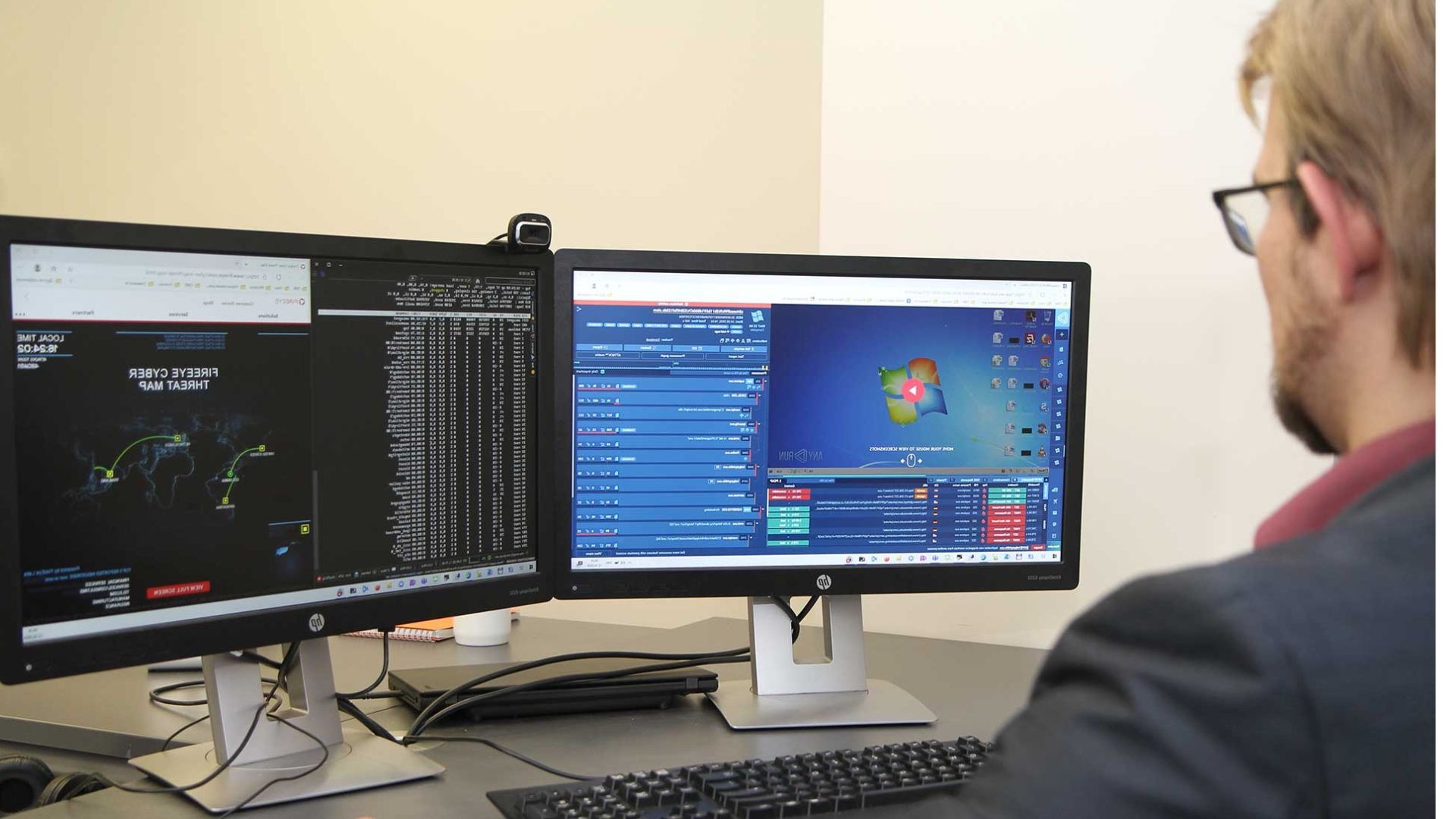Did you know that over 60% of businesses experience cyber attacks every week without detecting them? As attackers grow more cunning and the digital threat landscape becomes increasingly unpredictable, traditional defences are no longer enough. The future of penetration testing is shaped by artificial intelligence, automation, and a wave of emerging vulnerabilities that demand smarter, faster responses.
Penetration testing, once a manual and periodic task, is now evolving into a proactive, continuous security strategy. It no longer involves scanning for open ports or testing login credentials—it has grown into an intelligent process that mirrors the behaviour of real-world attackers. AI can now help simulate threats at scale while automation accelerates detection and response.
Ethical hacking has become a frontline strategy in this new era of cyber defence. Staying ahead means embracing innovation or risk being left vulnerable to threats that never stop evolving.
What is Penetration Testing and Why It Still Matters

Penetration testing, often called ethical hacking, is the practice of simulating real-world cyber attacks to uncover security vulnerabilities before malicious actors can exploit them. It’s a crucial component of a strong cybersecurity framework, clearly showing how systems, applications, and networks hold up under pressure.
Despite rapid advancements in automation and AI tools, penetration testing remains essential. It delivers insights beyond what scanners and automated platforms can detect, including logical flaws, access control issues, and business logic weaknesses.
There are different testing approaches, including:
- Black box testing – simulates an external attack with no prior system knowledge
- White box testing – conducted with full access to internal systems and architecture
- Grey box testing – a hybrid method with partial information
Whether human-led or automated, penetration testing plays a vital role in:
- Exposing hidden vulnerabilities
- Meeting compliance standards
- Reducing long-term security risks through informed decision-making
The Rise of AI in Penetration Testing
Artificial intelligence is rapidly becoming a key player in the evolution of penetration testing. Once limited to manual probing and static tools, the field now benefits from AI-powered systems that can analyse vast datasets, mimic attacker behaviour, and adapt to dynamic environments. The result? Faster, smarter, and more scalable security assessments.
AI in penetration testing is making waves through:
- AI-driven vulnerability scanners that assess code, configurations, and access controls with precision
- Behavioural analysis engines that identify anomalies by learning how legitimate users interact with systems
- Machine learning models that detect patterns and predict potential weaknesses based on past incidents
- Simulation of real-world attacks that replicate adversary tactics across a range of environments
These innovations enhance penetration testing by offering:
- Greater speed in detection
- Massive scale across complex infrastructures
- Continuous monitoring with minimal downtime
However, AI isn’t foolproof. It can struggle to interpret context, produce false positives, and become a crutch when relied on exclusively. Red teaming tools still need human insight to make sense of grey areas that automation can miss.
Ultimately, blending threat intelligence with AI creates a more robust and responsive testing environment—when used wisely.
Automation: Redefining Speed and Accuracy
Automation is transforming penetration testing from a labour-intensive task into a streamlined, high-efficiency process. As cybersecurity threats grow in complexity and frequency, the demand for faster assessments has made automated penetration testing a vital part of modern security strategies.
Automation enhances key stages of the testing lifecycle:
- Automated reconnaissance gathers data on networks and assets without manual effort
- Vulnerability scanning pinpoints weak spots quickly and efficiently
- Script-based attack simulations replicate known exploits at scale
- CI/CD integration allows security testing to become part of the development pipeline, making DevSecOps a reality
Tools such as Metasploit and Burp Suite offer powerful automation capabilities, helping red teams uncover flaws with minimal delay. These platforms can be customised to run scheduled scans, mimic attacker behaviour, and provide real-time reporting.
Despite the speed and cost benefits, automation isn’t a silver bullet. Human involvement is still essential for:
- Validating false positives
- Interpreting results in business context
- Designing tailored attack paths beyond generic scripts
As cybersecurity trends continue to shift, automation will play an even greater role—but it works best when paired with the critical thinking and creativity of experienced testers.
Emerging Threats Demanding Next-Level Testing
The cyber threat landscape has grown more aggressive and unpredictable in recent years. Attackers are no longer relying on brute force or outdated malware. Instead, they’re adopting sophisticated tactics that traditional penetration testing tools are ill-equipped to handle. To counter these threats, security teams must move beyond basic scans and embrace deeper, more advanced testing approaches.
Some of the most pressing emerging cyber threats include:
- AI-generated phishing – Hyper-personalised phishing emails crafted with natural language models are harder to detect and increasingly successful at bypassing filters.
- Deepfake-driven social engineering – Voice and video manipulation tools are now used to impersonate executives or trusted individuals, tricking employees into giving up sensitive access.
- Zero-day exploits and supply chain attacks – Threat actors target third-party vendors or exploit unknown vulnerabilities before patches are available.
- Fileless malware operates entirely in memory and leaves no files behind, making traditional endpoint detection nearly useless.
- Cloud misconfigurations – Rapid cloud adoption often leads to weak permissions and unsecured data buckets, providing easy access for attackers.
These modern threats demand more than automated reports—they require penetration testing tailored to mimic sophisticated, real-world attack paths. In this environment, understanding context is everything. Testers must think like adversaries, adapting quickly as threats evolve.
Security vulnerabilities are no longer just technical—they’re strategic. Combatting them means thinking ahead and testing smarter, not harder.
How Red and Blue Teams Are Evolving with Technology
Red and blue teams, once operating in siloed roles, are now evolving with the help of technology to create a more unified, agile defence. Automation and AI have enhanced both sides of the cybersecurity coin—offence and defence—leading to smarter, more strategic outcomes.
On the offensive front, red teaming tools now include intelligent scripting capabilities that simulate complex, multi-stage attacks. These tools mimic real adversaries, allowing teams to test systems under authentic pressure conditions.
Meanwhile, blue teams are benefiting from machine-assisted anomaly detection. AI-powered tools analyse network behaviour in real-time, flagging unusual patterns that might otherwise slip through human observation.
The biggest shift lies in collaboration. Threat intelligence platforms now enable red and blue teams to share insights, tactics, and data, leading to faster remediation and more effective preparation against advanced attacks.
As cybersecurity trends continue to shift, successful organisations will treat red and blue teams as two halves of the same, continuously learning engine.
Balancing Machine Intelligence and Human Ingenuity
While AI in penetration testing brings speed and scale, it lacks the intuition and lateral thinking that human ethical hackers bring to the table. Technology can scan for known vulnerabilities but can’t interpret nuance, understand business logic, or improvise in unfamiliar environments.
That’s where ethical hacking shines. It’s about creativity, experience, and real-time adaptation—skills machines have yet to master.
AI should be seen as an enabler, not a replacement. When automation works alongside skilled professionals, penetration testing becomes far more effective. The real strength lies in this collaboration, where human insight drives the machine to smarter outcomes.
Choosing a Forward-Thinking Penetration Testing Partner

Selecting a provider for penetration testing services is not just about ticking boxes—it’s about future-proofing your security. A forward-thinking partner blends the latest technologies with expert human insight to stay ahead of modern threats.
Before making a decision, consider:
- Do they leverage AI-assisted tools to enhance testing accuracy and scale?
- Are they staying informed on emerging threat vectors and industry trends?
- Can they deliver tailored assessments specific to your business rather than off-the-shelf scans?
The future of penetration testing requires agility, innovation, and a human touch. Choose a partner who can deliver all three.
Where Do We Go From Here?
The cybersecurity landscape is shifting fast, and AI-driven penetration testing is set to lead the charge. Soon, real-time simulation environments will stress-test defences against highly adaptive threats, while autonomous ethical hacking agents will uncover vulnerabilities before attackers close. Powered by generative AI, these agents won’t just react—they’ll predict.
At the same time, regulatory pressure will continue to rise, pushing organisations toward greater accountability and sharper testing practices. Future cybersecurity trends will favour proactive, AI-assisted defence over passive monitoring. In this new era, the future of penetration testing isn’t machine versus human—it’s machine-guided by human intelligence, built to stay ahead in an algorithmic arms race.
Get Ahead of the Curve with Datcom
Cyber attacks are getting smarter—your defence should be, too. At Datcom, we deliver advanced penetration testing services that fuse AI-driven technology with hands-on expertise. Our team doesn’t just run scans—we simulate real-world threats to expose hidden vulnerabilities before they’re exploited.
Whether you’re a startup or an enterprise, we tailor every assessment to match your risk profile and evolving infrastructure. It’s not just about staying compliant—it’s about staying protected.
Partner with Datcom to future-proof your digital security. The future of cybersecurity belongs to those who prepare for what’s next. Call us now, and let’s secure it together.




